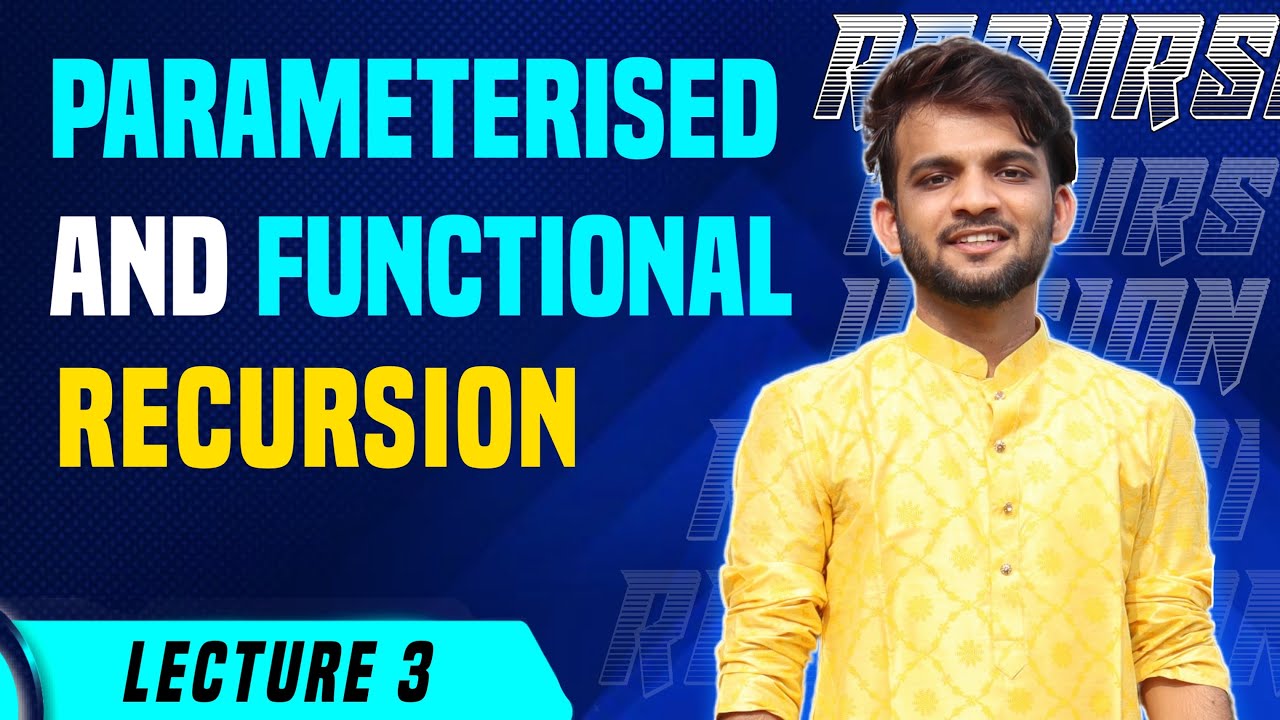Recursive Linked List from Scratch
Summary
TLDRIn this video, the speaker explores two methods for summing the values in a linked list: an iterative approach and a recursive approach. Both methods traverse the list, adding node values to a running total, but they differ in implementation. The iterative solution uses a loop, maintaining a constant space complexity, while the recursive solution calls itself for each node, introducing a larger space complexity. The speaker discusses the time and space complexities of each approach and highlights the advantages of understanding both techniques for future problem-solving.
Takeaways
- 😀 Understanding how to access the first node of a linked list using 'list.head' or a similar variable name.
- 😀 You can write a function that takes in the head of a linked list as an argument to perform operations like summing the node values.
- 😀 The iterative approach to summing the linked list requires traveling through each node, updating a running sum until the end is reached.
- 😀 When using iteration, you use a 'current' pointer to traverse each node and accumulate the node's value into the sum.
- 😀 The iterative solution for summing a linked list has a time complexity of O(n) and space complexity of O(1), which is optimal for this type of problem.
- 😀 The recursive solution to summing the linked list is based on the idea of breaking down the problem into smaller subproblems by calling the function recursively on the next node.
- 😀 In the recursive solution, the base case is when the current node is null, meaning the list is empty and the sum should be zero.
- 😀 The recursive approach returns the current node's value plus the sum of the remaining nodes, building up the total sum as recursion unwinds.
- 😀 The recursive solution also has a time complexity of O(n), but its space complexity is O(n) due to the stack frames used for each recursive call.
- 😀 The iterative solution is preferred in terms of space efficiency because it only requires a constant amount of space (O(1)).
- 😀 Both iterative and recursive solutions are valuable to learn as they provide different ways of thinking about solving linked list problems, and you may need either approach in different scenarios.
Q & A
What is the purpose of defining the 'sumList' function in the script?
-The purpose of the 'sumList' function is to calculate and return the sum of all the values in a linked list by traversing through all its nodes.
What is the key difference between the iterative and recursive solutions for summing a linked list?
-The key difference lies in the approach: the iterative solution uses a loop to traverse the linked list and accumulate the sum, while the recursive solution uses recursive calls to sum the values by breaking down the problem into smaller subproblems.
How does the iterative solution traverse the linked list?
-In the iterative solution, a pointer ('cur') starts at the head of the linked list. It moves to the next node after each iteration (via 'cur = cur.next'), and the value of the current node is added to a running sum until the end of the list is reached (when 'cur' becomes null).
What is the base case in the recursive solution for summing a linked list?
-The base case in the recursive solution is when the 'head' is null, indicating that the list is empty or the end of the list has been reached. In this case, the function returns 0.
What happens in the recursive solution when the linked list is not empty?
-If the list is not empty, the recursive solution returns the value of the current node ('head.value') plus the result of a recursive call to the sum of the rest of the list (i.e., 'sumList(head.next)').
What are the time and space complexities of the iterative solution?
-The time complexity of the iterative solution is O(n), where n is the number of nodes in the linked list, since each node is visited once. The space complexity is O(1) because it uses a constant amount of extra space (only a few variables).
What are the time and space complexities of the recursive solution?
-The time complexity of the recursive solution is O(n) because each node is visited once. The space complexity is O(n) due to the stack space required for the recursive calls (one stack frame per call).
Why is the iterative solution more space-efficient than the recursive solution?
-The iterative solution is more space-efficient because it uses a fixed number of variables and doesn't require additional stack space, while the recursive solution needs O(n) space for the call stack, one frame for each recursive call.
In what scenarios would you prefer the iterative solution over the recursive one?
-The iterative solution is preferred when space efficiency is critical, especially in cases where the linked list is very long, as recursion can lead to a stack overflow due to the O(n) space complexity.
What is the benefit of knowing both iterative and recursive approaches for solving linked list problems?
-Knowing both approaches allows you to choose the best solution based on the problem's requirements. Some problems may be more naturally solved using recursion, while others may require iteration for efficiency or to avoid stack overflow.
Outlines

This section is available to paid users only. Please upgrade to access this part.
Upgrade NowMindmap

This section is available to paid users only. Please upgrade to access this part.
Upgrade NowKeywords

This section is available to paid users only. Please upgrade to access this part.
Upgrade NowHighlights

This section is available to paid users only. Please upgrade to access this part.
Upgrade NowTranscripts

This section is available to paid users only. Please upgrade to access this part.
Upgrade Now5.0 / 5 (0 votes)





